The Christmas Cactus, (Schlumbergera truncata), is a stunning succulent native to the coastal mountains of Brazil. This cactus has captured the loyalty of untold plant enthusiasts for generations.
The ability to display vibrant flowers during the holiday season, earn this succulent the common name “Christmas Cactus”. It blooms at times other plants are dormant. It’s brightly colored flowers are so welcome In the winter months.
The Christmas Cactus has an interesting structure and texture that make it a beauty year round. The green glossy leaves grow into flat, serrated, segmented stems. The trailing stems gracefully arch downwards to hang over the pot.
But what makes the Christmas Cactus truly captivating is its stunning blooms. Just as the name suggests, this cactus bursts into an array of colorful flowers around the Christmas season, adding a touch of natural beauty to your home when the days are short and sunlight dims.
The flowers are available in various colors, including shades of pink, red, orange, purple, and white. The blossoms are tubular in shape, with wavy, pointed petals that form a radial symmetry.
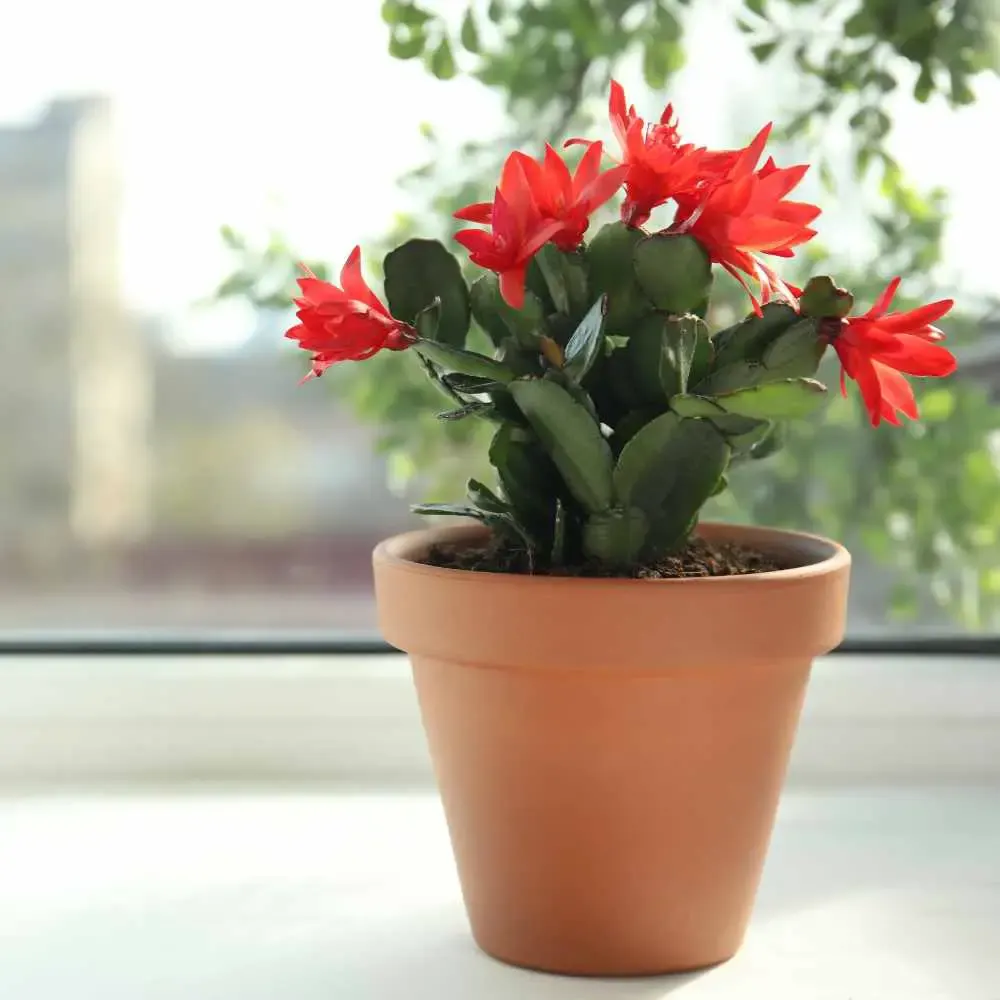
How To Source Christmas Cactus:
You can find Christmas cactus in local garden shops or online. We prefer Etsy for our online plant purchases. These are mostly small family shops who are experts on the plants they sell and how to ship them. If your looking for new colors or interesting varieties, try a well rated Etsy Shop.
The Christmas Cactus is not only a delightful addition to indoor spaces but like the beautiful Gloxinias, also makes for a wonderful gift during the holiday season or anytime you want to Spread cheer and joy. This easy care cactus with off season vibrant blooms is sure to raise spirits during the gloomy months of the year.
With proper care and attention, this captivating cactus can become a cherished part of any home, brightening up the winter months and serving as a reminder of nature’s beauty.
Christmas Cactus Care:
Learning how to care for a Christmas Cactus is quite easy if you pay attention to these few tips: It thrives in bright, indirect light, but it’s important to avoid direct sunlight, as it can scorch the leaves. The plant prefers temperatures between 60°F and 70°F (15°C to 24°C) and appreciates moderate humidity levels. It’s crucial to water the Christmas Cactus properly, allowing the top inch of soil to dry out between waterings and avoiding overwatering, which can lead to root rot. Succulents and Cactus
Here’s a care table summarizing the care and maintenance information for easy reference:
| Care Aspect | Description |
|---|---|
| Light | Bright, indirect light, avoiding direct sunlight |
| Temperature | 60°F to 70°F (15°C to 24°C) |
| Humidity | Moderate humidity levels |
| Watering | Allow top inch of soil to dry between waterings |
| Soil | Well-draining, porous soil for cacti/succulents |
| Fertilization | Balanced, diluted fertilizer every 2-4 weeks in growing season |
| Resting Period | Reduce watering and withhold fertilization in fall |
| Pruning | Prune after blooming or during spring |
| Propagation | Stem cuttings in well-draining potting mix |
| Pests and Diseases | Watch for mealybugs and spider mites; avoid overwatering |
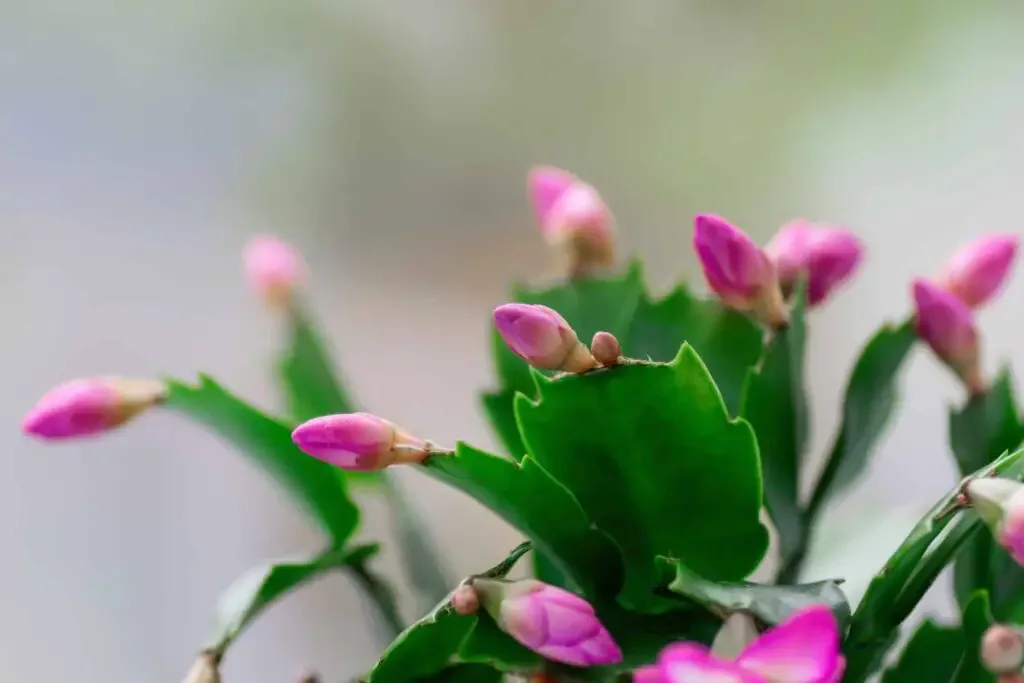
The Christmas Cactus ability to bloom in the off season when other plants are dormant is fairly unique. It’s worth keeping one just for the winter blooms. With the right conditions, this plant can reward you with a stunning display of flowers during the winter months when other plants are sleeping.
What Triggers a Christmas Cactus to Bloom?
Christmas Cactus bloom is triggered by changes in light and temperature. They bloom when the night cycle lengthens, sunlight dims and temperatures cool.
Here are Tips to influence the blooming process:
Remember that patience is key. Bud formation to blooming can take several weeks with the Christmas cactus.
- Day Length: Christmas Cacti are known as short-day plants or long-night plants. They require longer nights (periods of darkness) and shorter days (periods of light) to initiate flower bud formation. Generally, they need around 12-14 hours of uninterrupted darkness each day for several weeks to trigger blooming.
- Temperature: The Christmas Cactus responds well to cooler temperatures during its resting period, which typically occurs in the fall. Exposing the plant to temperatures around 50°F to 55°F (10°C to 13°C) for about 6-8 weeks can encourage the development of flower buds. This cooling period helps set the stage for the upcoming blooming cycle.
- Light Intensity: While Christmas Cacti prefer bright, indirect light for their overall growth, during the period leading up to blooming, they benefit from slightly lower light intensity. Intense or direct sunlight can hinder bud formation, so it’s important to provide them with bright but filtered light.
- Resting Period: The Christmas Cactus requires a period of rest or dormancy to prepare for blooming. During this resting period, typically in the fall, reduce watering frequency and cease fertilization. This period of reduced care and cooler temperatures signals to the plant that it’s time to initiate flower bud development.
Providing the appropriate environmental cues and allowing the plant to follow its natural growth cycle will increase the likelihood of a vibrant and beautiful display of flowers during the holiday season.
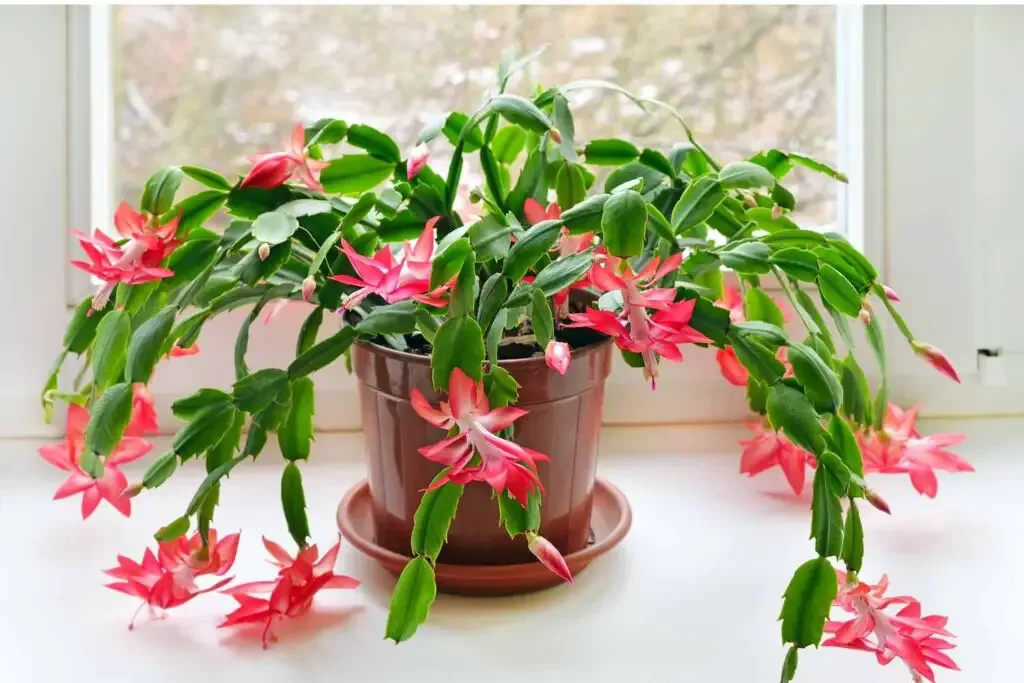
How to Propagate Christmas Cactus:
Propagating a Christmas Cactus (Schlumbergera truncata) is most often done through stem cuttings. The best time of year to propagate is in spring or summer when the plant is actively growing. This encourages the cutting to develop roots and get established before dormancy sets in.
Here’s a step-by-step guide on how to propagate your Christmas Cactus:
- Select a healthy parent plant: Choose a mature and healthy Christmas Cactus as the source for your cuttings. Make sure it’s free from pests and diseases. This is IMPORTANT. Healthy mom plant means a healthy kids plant. Age of plant is not a big deal if mom plant is in good condition.
- Prepare the tools and materials: Gather a clean, sharp pair of pruning shears or scissors, a clean container or pot for planting, well-draining potting mix suitable for cacti or succulents, and optional rooting hormone (though it’s not necessary for Christmas Cactus propagation).
- Take stem cuttings: Identify a healthy segment of the Christmas Cactus stem, about 3-4 segments long. Using the pruning shears or scissors, make a clean cut just above a segment joint. This will be your cutting.
- Allow the cuttings to callus: After taking the cuttings, set them aside in a cool, dry location for a few days to allow the cut ends to callus. This helps prevent rotting when planted.
- Prepare the planting medium: Fill a clean container or pot with well-draining potting mix suitable for cacti or succulents. Moisten the potting mix slightly, ensuring it’s not overly wet or soggy.
- Plant the cuttings: Once the cut ends have calloused, gently insert the cuttings into the moistened potting mix, burying them about an inch deep. You can plant multiple cuttings in the same pot, spacing them a few inches apart.
- Provide appropriate conditions: Place the pot in a warm, bright location with indirect light. Avoid direct sunlight, as it can be too harsh for the newly planted cuttings. Maintain a temperature range of around 70°F to 80°F (21°C to 27°C).
- Watering and care: Water the cuttings lightly, allowing the top inch of the potting mix to dry out between waterings. Be cautious not to overwater, as excessive moisture can lead to rot. Mist the cuttings occasionally to increase humidity around them.
- Root development: Over time, the cuttings will start developing roots. This process may take a few weeks to a couple of months. Be patient and refrain from disturbing the cuttings during this crucial phase.
- Transplanting: Once the cuttings have established a healthy root system, and new growth is visible, you can consider transplanting them into individual pots suitable for succulents, with well-draining soil suitable for cacti or succulents.
Remember to provide regular care, including appropriate watering, adequate light, and suitable temperature conditions, to help your propagated Christmas Cactus thrive and grow into a mature, blooming plant.
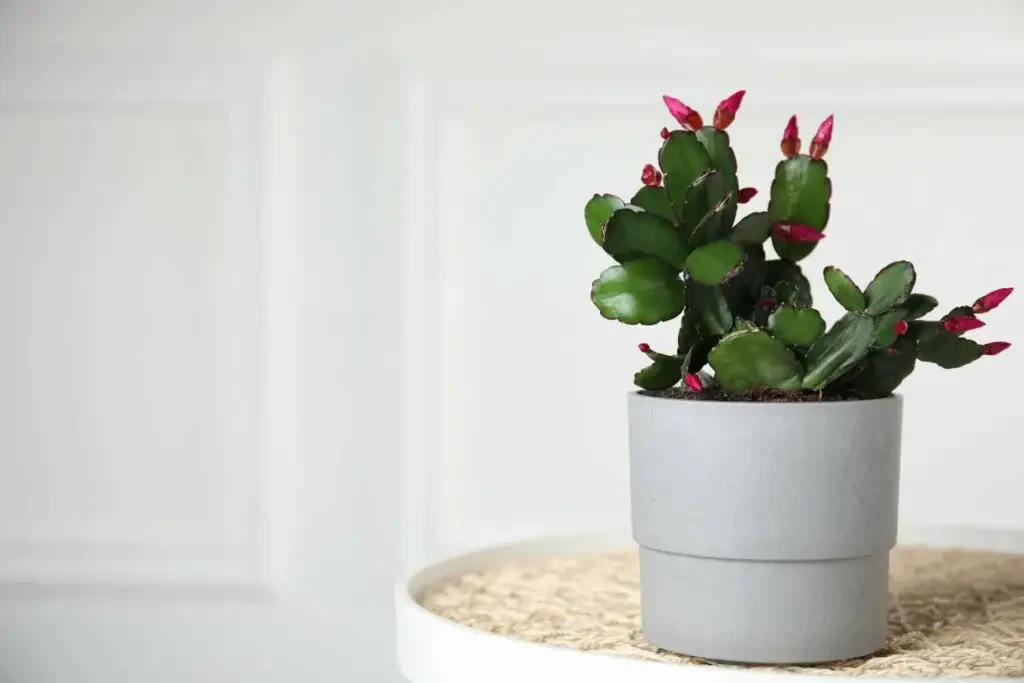
Are Christmas Cactus Poisonous to Cats?
Christmas Cacti are considered non-toxic to cats, dogs and humans according to the American Society for the Prevention of Cruelty to Animals (ASPCA).
While Christmas Cacti are safe for cats, it’s always a good practice to monitor your pets and discourage them from chewing or ingesting any houseplants. Some cats may have individual sensitivities or allergies that could cause mild digestive upset if they chew the plant. Also, be sure that the plants are not treated with any pesticides or chemicals that could be harmful to pets.
If you suspect your cat has ingested a significant amount of any plant and shows signs of illness such as vomiting, diarrhea, or unusual behavior, contact your veterinarian for guidance.
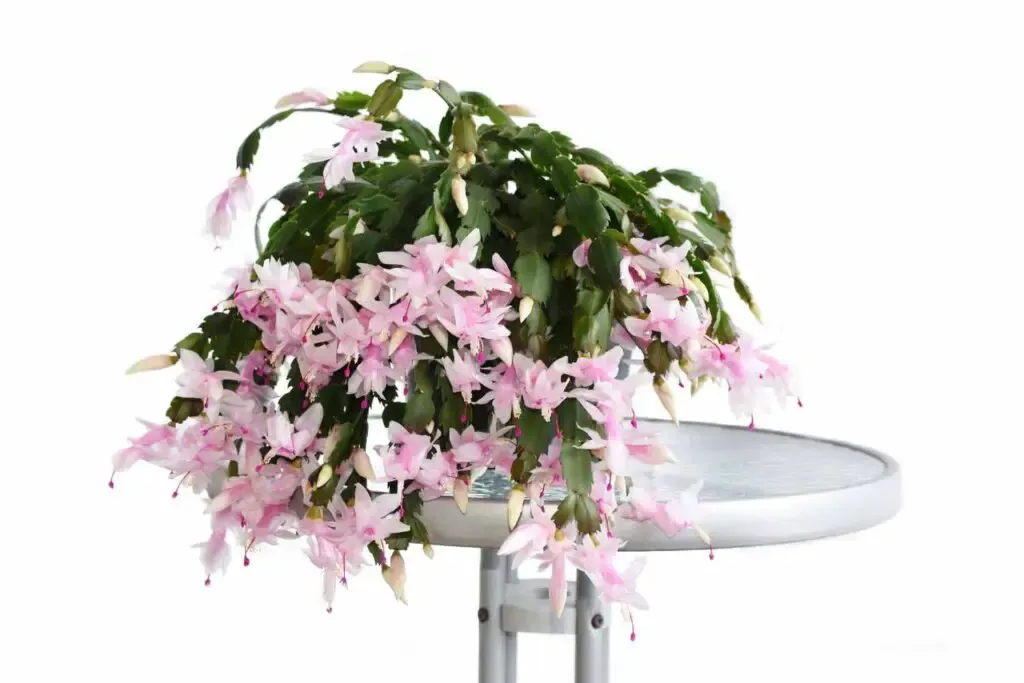
Related Content:
Follow Us:
Find us on YouTube, Instagram , Pinterest and TikTok! We love to Plant chat. We also comment, like and occasionally share your content to our daily stories. We’d love to see your plants. Share your joy in your houseplants. Happy Planting!


Moon Cactus Care And Propagation - The Contented Plant
Wednesday 30th of August 2023
[…] Bunny Ears Cactus Golden Ball Cactus Christmas Cactus […]